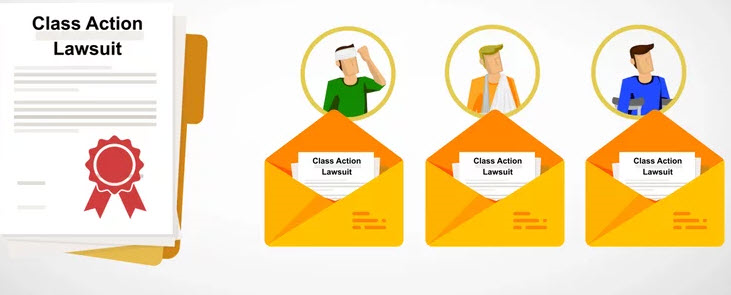Comprehending Course Activity Lawsuit: A Guide for Lawyers
Course action suits have become an integral component of the lawful landscape, allowing for the debt consolidation of numerous insurance claims into a single activity. For legal representatives, recognizing the intricacies of class action litigation is important in efficiently representing their clients. This detailed guide discovers the principles of class action legal actions, from recognizing possible class participants to browsing the accreditation process. Additionally, it explores crucial strategies for managing course action litigation and gives insights into bargaining and acquiring authorization for negotiations. By diving into the details of class activity legal actions, this guide outfits lawyers with the understanding and devices required to effectively navigate this complicated area of regulation.
The Fundamentals of Course Activity Lawsuits
Course activity suits are a lawful device employed to settle similar insurance claims from a team of individuals into a single suit, providing a effective and cost-efficient strategy to seeking justice and resolution. This kind of legal action permits a representative complainant, acting upon part of the entire class, to bring a case against a defendant that has actually purportedly triggered damage or breached the civil liberties of multiple individuals.
The standard requirements for bringing a course activity legal action consist of numerosity, commonality, typicality, and adequacy of depiction. Numerosity refers to the reality that the class must be so large that joinder of all members would be not practical.
Course action suits can be useful for both offenders and plaintiffs. For accuseds, it supplies the possibility to effectively resolve several cases in a single claim, avoiding the requirement to safeguard versus many private suits.
Identifying and Assessing Prospective Course Members
After establishing the standard requirements for a course activity lawsuit, the next step is to determine and evaluate prospective course participants. If they fulfill the needed criteria., this procedure entails determining who may be part of the class and reviewing their claims to figure out.
To determine possible course participants, attorneys typically carry out substantial research study and collect appropriate information. This may involve examining papers, carrying out meetings, and analyzing records to determine individuals or entities that may have been influenced by the claimed wrongdoing. It is essential to establish a clear and extensive checklist of prospective class members to ensure that all affected events are included in the suit.
Once possible class participants have actually been determined, the next action is to evaluate their cases. If they meet the lawful demands for class accreditation, this involves examining the advantages of each private insurance claim to identify. Legal representatives should meticulously analyze the facts, proof, and lawful theories of each possible class member's insurance claim to ensure that they have a feasible instance.
Evaluating possible class participants additionally involves figuring out whether they fulfill the class interpretation and have experienced comparable harm as a result of the offender's actions. This calls for contrasting the facts and scenarios of each possible class member's circumstance to the allegations and legal theories placed forth in the lawsuit.
Navigating the Course Certification Process
To effectively browse the course qualification process, attorneys need to faithfully stick to the procedural needs established forth by the court. Course qualification is a vital action in a class action claim, as it establishes whether an instance can continue as a course action, standing for a team of people that have comparable insurance claims versus an offender. The procedure entails pleasing details criteria, such as numerosity, commonality, typicality, and adequacy of representation.
To start with, legal representatives need to establish numerosity by showing that the course is so big that individual joinder is impractical. This calls for an extensive look at here now analysis of the defenses and cases included.
Next, legal representatives need to show typicality, which implies that the representative complainant's insurance claims are typical of the cases of the class members. This makes certain that the passions of the representative complainant align with the interests of the course. Lawyers must show adequacy of depiction, implying that the depictive complainant and their guidance will rather and properly stand for the passions of the class.
To navigate this procedure effectively, legal representatives should completely prepare by performing comprehensive study, gathering evidence, and creating an engaging argument that satisfies each of these standards. They should additionally be prepared to react to any arguments or difficulties increased by the offender. By faithfully adhering to the procedural requirements stated by the court, lawyers can boost their opportunities of obtaining course certification and advancing the interests of the class members.

Key Approaches for Managing Class Activity Litigation
Upon efficiently browsing the class accreditation process, legal representatives should after that implement essential methods for efficiently managing class action lawsuits. These approaches are essential to make certain that the situation continues efficiently and successfully, ultimately optimizing the possibilities of a favorable outcome for the class members.
One secret method is to establish a natural and solid lawful group (Class action lawsuit). This includes putting together a team of lawyers with proficiency in class action lawsuits, as well as other relevant areas such as the details industry or topic included in the situation. A well-rounded team can bring different viewpoints and abilities to the table, boosting the total performance of the lawsuits
One more vital strategy is to create a well-balanced and comprehensive litigation plan. This strategy needs to detail the general purposes of the case, along with the certain legal concepts and debates that will certainly be gone after. It ought to likewise consist of a timeline and spending plan to make certain that the situation stays on track and within the designated resources.
Furthermore, lawyers should proactively this link engage with the course participants throughout the lawsuits process (Class action lawsuit). This consists of supplying routine updates on the progress of the instance, seeking input and comments from the course participants, and dealing with any questions or problems they may have. By cultivating open communication and partnership, lawyers can construct count on and assistance among the course members, which can be important in attaining a successful resolution
Resolving Class Activity Claims: Negotiation and Authorization
When it comes to clearing up course activity lawsuits, effective settlement and getting approval are crucial steps in attaining a resolution. Class activity legal actions are complicated and entail a a great deal of complainants, making it vital to reach a settlement that is reasonable and acceptable to all events involved.

As soon as a settlement arrangement is reached, it should be authorized by the court. The court's role in this process is to make certain that the negotiation is fair, affordable, and sufficiently protects the rate of interests of the class members. The court will think about factors such as the nature of the cases, the toughness of the proof, the possible recovery for the class participants, and any kind of arguments increased by course members.
Getting court authorization is crucial as it offers finality to the settlement and safeguards the interests of the class participants. It makes certain that the settlement is binding and enforceable, and class participants can obtain their rightful settlement.
Final Thought

Course action legal actions have actually ended up being an indispensable component of the lawful landscape, allowing for the consolidation of numerous insurance claims right into a single activity. Class qualification is an important step in a course action legal action, as it determines whether a case can continue as a class action, standing for a team of individuals that have similar insurance claims versus an accused. By diligently sticking to the step-by-step browse around this web-site requirements established forth by the court, attorneys can increase their possibilities of obtaining class qualification and advancing the passions of the class participants.
The court will think about variables such as the nature of the claims, the stamina of the proof, the possible recuperation for the class members, and any type of arguments elevated by class participants.
By recognizing and assessing prospective course participants, lawyers can determine the feasibility of a course activity suit.
Comments on “Justice for All: The Role of Class Action Lawsuits in Safeguarding Customers”